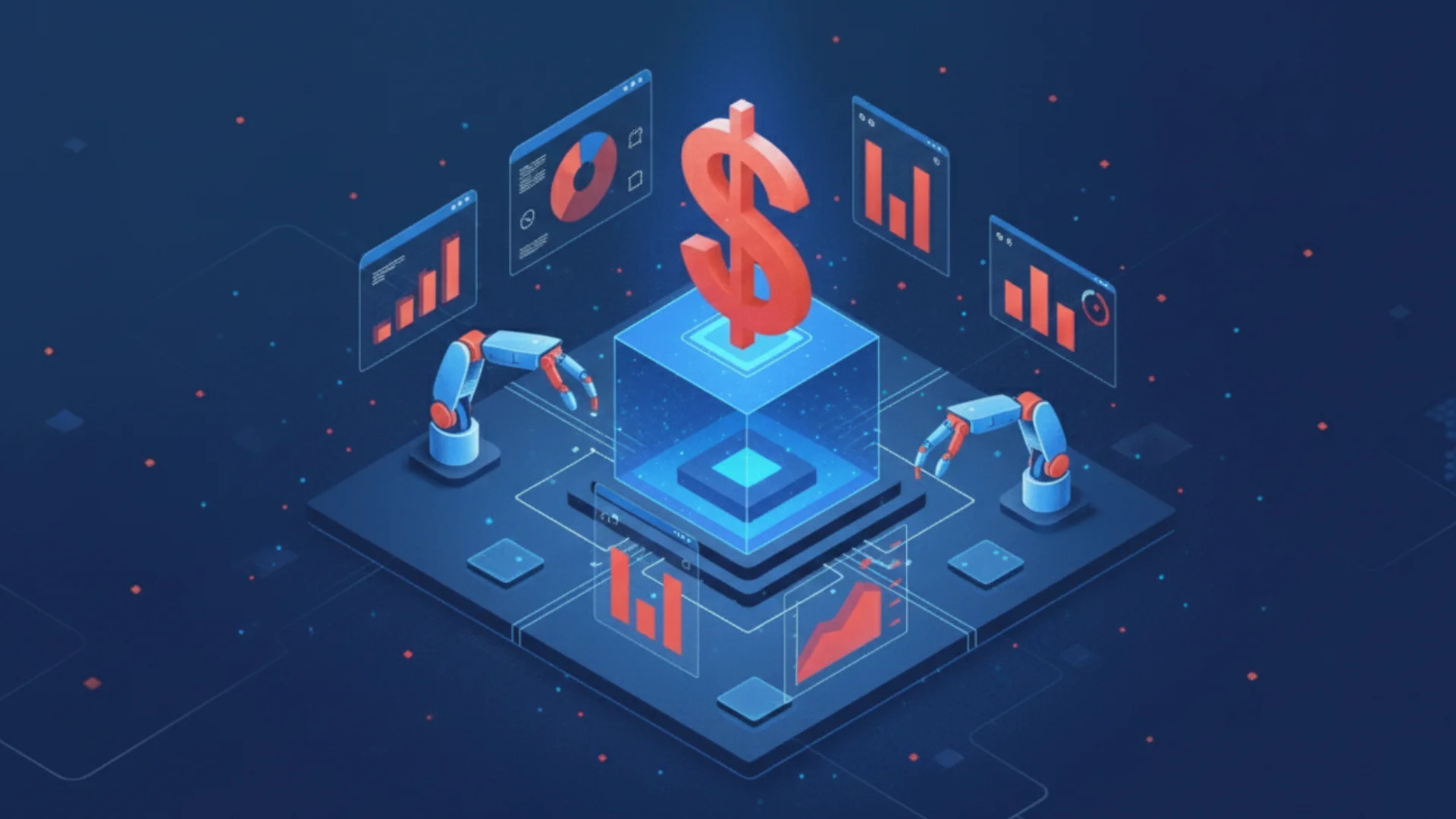How AI Is Redefining Financial Reporting

Last week, I sat across from a CFO of a fast-growing SaaS company. Her team had just wrapped up the month-end close. “We closed the books in 10 days this time,” she said with a half-smile, “faster than last quarter but still too slow.”
Her finance team had spent nights reconciling accounts, fixing mismatched entries, and double-checking spreadsheets just making the numbers agree.
Then she leaned back and said, “I’ve been hearing a lot about AI financial reporting. Does it actually work?”
It’s a question every finance leader is asking and the proof is emerging. For example, HighRadius reports that a major hotel chain reduced its month-end close time by 75% across 1,700+ entities after automating 95% of its financial reporting processes.
At Zenskar, we’ve seen CFOs experience it firsthand. Teams that once battled spreadsheets now walk into review meetings with clean, audit-ready dashboards that update themselves in real time.
In this blog, we’ll explore how AI in financial reporting is redefining accuracy, speed, and strategic decision-making for modern finance teams.
How can businesses understand and leverage AI in financial reporting?
Let’s start with the basics, what exactly is AI financial reporting?
Simply put, it’s when machine learning, natural language processing, and automation come together to handle the repetitive, error-prone parts of financial reporting and give humans back their time for strategy.
AI financial reporting leverages intelligent bots and analytics to automate data processing, reduce errors, and produce flexible, real-time financial statements. These bots read ledgers, match transactions, validate entries, and even detect outliers all in real time.
Here’s what it actually looks like in practice:
- Automated data entry: Bots pull records from ERP, CRM, and billing systems and post them into ledgers instantly.
- Smart reconciliation: The system spots mismatched transactions, flags exceptions, and even suggests corrections, making accounting reconciliations easy.
- Dynamic consolidation: Multi-entity reports that once took days now roll up automatically.
- Narrative insights: NLP tools can generate plain-language commentary explaining revenue shifts or expense anomalies.
Here’s what’s exciting - real data is starting to prove the promise. A recent MIT–Stanford study, covered by CFODive, found that accountants deploying generative artificial intelligence cut 7.5 days off their monthly close, improved reporting detail by 12%, and shifted 8.5% of their time from routine back-office work to higher-value analysis.
And that’s just the start. AI is now interpreting trends, forecasting outcomes, and producing automated insights not just reporting the past but narrating the future.
What is the impact of AI on financial reporting processes?
When CFOs talk about AI, it’s rarely about hype, it’s about impact. The numbers tell the story. By adopting AI financial reporting, finance teams are seeing measurable gains across every part of the reporting cycle:
- Faster closes: Teams using AI have shaved 7.5 days off their monthly close cycles, freeing time for real analysis instead of reconciliation busywork.
- Cleaner data: Automated validation and anomaly detection catch errors instantly which means no more late-night spreadsheet hunts.
- Smarter insights: Continuous analytics turn static reports into real-time dashboards that tell you why numbers moved, not just what happened.
- Stronger compliance: AI accounting tools auto-document every change, maintaining full audit trails and making regulatory checks painless.
- More strategic finance teams: With AI handling the routine, finance professionals spend up to 8.5% more of their time on higher-value planning and forecasting.
How does AI accelerate data collection and validation?
In the traditional approach, you’d wait days for data to trickle in from different departments. Today, AI pulls, cleans, and validates everything within minutes. AI-powered systems speed up data collection and validation, reducing manual errors and freeing up finance professionals for strategic tasks.
With AI (and related automation) integrated into your data pipelines, you can reduce those delays dramatically, freeing finance teams to focus on insight and strategy rather than firefighting data.
Real-life example
- According to a survey by Gartner, Inc., 44 % of finance functions using AI cite intelligent process automation, and 39 % cite anomaly/error-detection, as key use-cases. Gartner
- A case study of a manufacturing company automated its financial reporting by building ETL pipelines integrating multiple systems; the result: reduced report-generation time by 85 % and improved data accuracy to 99.8 %.
- At an e-commerce retailer (in India), building automated data pipelines reduced the month-end close from 7-10 man-days to 4 hours.
Actionable take-aways for CFOs / Finance Leaders
- Map all data sources (ERP/CRM/billing/RGM/spreadsheets) and identify «dark data» or manual-handoff points.
- Automate the pull & staging layer: Use AI/ML or intelligent document processing (IDP) to extract, standardise and validate data automatically.
- Embed validation rules early: before data even hits the model, build anomaly detection, consistency, completeness checks. That cuts error propagation.
- Metric to track: % of data-prep time reduced; error rate prior to analytics; hours saved in finance close each cycle.
- Caution: Clean, accepted data is the foundation. Up-front investment in data governance often pays off faster than chasing flashy AI dashboards.
How does AI enable real-time reporting and insights?
In a recent webinar hosted by Zenskar, Nicolas Boucher, Founder of the AI Finance Club and one of Europe’s leading voices on AI in Finance, FP&A, and Controlling, explained how companies are using AI to achieve always-on reporting and forecasting accuracy.
“AI can certainly improve financial forecasting and budgeting by using real-time data to generate more accurate predictions,” Nicolas shared. “By automating the collection and analysis of financial data, AI ensures that forecasts are always based on the most up-to-date information. This enables finance teams to make their budgeting more agile, adjusting quickly to market changes and making truly data-driven decisions.”
These insights echo a broader trend in modern finance: AI-driven reporting isn’t just about faster numbers, it’s about smarter decisions. Companies using AI-enabled dashboards now have constant access to refreshed KPIs like revenue, margins, burn rate, and DSO. This real-time clarity allows finance leaders to shift from “closing the books” to “steering the business.”
Actionable take-aways
- Ensure upstream systems integrate (billing, RGM, ERP) so data arrives fast, speed of insight begins with speed of ingestion.
- Design dashboards for business-users: show key metrics refreshed automatically, not just static monthly packs.
- Shift mindset from «closing the books» to «opening opportunities»: monitor leading indicators daily/weekly rather than just lagging ones monthly/quarterly.
- Define triggers/alerts: e.g., if margin by product falls by 5 % week-on-week, alert finance/business partner automatically.
- Track time-to-insight: how long from data arrival to meaningful dashboard insight? Aim to reduce that cycle.
How does AI enhance risk and compliance management?
Compliance doesn’t have to be a fire drill. AI-driven compliance tools automatically detect discrepancies, monitor audit trails, and support regulatory adherence.
Actionable take-aways
- Embed anomaly detection algorithms: e.g., flag unusual transactions, mismatches between contract terms and invoices, out-of-pattern billing.
- Maintain full audit-trail visibility: Ensure every adjustment in financial close is traceable — the AI tool should log and explain.
- Align with regulatory frameworks (e.g., US GAAP, IFRS) and build compliance rules into your automation.
- Measure improvement: Track metrics such as reduction in audit findings, hours of compliance review, error rates.
- Govern the AI implementation properly: Data privacy, AI explainability and oversight are critical, poor governance risks undermining trust.
These systems flag unusual transactions instantly, track every adjustment with full traceability, and generate reports auditors actually love. Audit readiness becomes a by-product of daily operations, not a year-end scramble.
How are finance teams adopting AI for benchmarking purposes?
If you’re wondering where your finance team stands on the adoption curve, you’re not alone. Recent benchmarks reveal varied stages of AI adoption across finance teams, with leading companies driving transformation through advanced analytics and automation.
According to a Protiviti Global Finance Trends Survey (2025), the number of finance organizations leveraging AI more than doubled year-over-year from 34% to 72%.
And while most teams are in early or mid-adoption stages, high-performing finance functions share three traits:
- Data readiness: They’ve standardized and centralized key financial data.
- Cross-functional collaboration: IT and finance work together instead of in silos.
- Cultural buy-in: Teams are trained, not threatened, by automation.
Here’s how you can ensure maximum results:
- Self-evaluate your stage: Are you in early exploration (pilots, manual overrides), scaling (2-3 workflows automated), or mature adoption (end-to-end automation)? You may benchmark yourself at industry averages.
- Focus on the three traits of high-performers: (a) Data readiness (centrally governed, harmonised), (b) Cross-functional collaboration (finance + IT + business), (c) Cultural buy-in (team trained and engaged rather than threatened).
- Define use-case prioritisation: Start with high-impact, high-feasibility areas within finance (e.g., anomaly detection, reconciliations) and build proof-points.
- Prepare for scaling: Once you have successful pilots, plan the architecture, data governance and change-management for scaling across finance.
- Track peer-metrics: E.g., % of finance cycle hours still manual, time-to-close, % of insights derived vs. data-collection hours. Use benchmarks to show improvement.
The challenge isn’t interest, it’s readiness. AI doesn’t fail due to tech, it fails due to unclean data and lack of buy-in. CFOs who recognize that are already ahead of the curve.
What are the best practices for implementing AI financial reporting solutions?
So, where do you start? Implementing AI financial reporting requires strategic planning, robust data governance, and focused user training to maximize impact and adoption.
Think of it as an evolution, not a plug-and-play switch.
Here’s how successful finance leaders approach it:
- Start with strategy, not software. Define why you’re implementing AI, is it to close faster, improve accuracy, or free up analyst time? A clear goal keeps everyone aligned.
- To successfully implement AI in financial reporting, start by building on clean, structured data, audit your existing systems and chart of accounts, as AI thrives on consistent inputs while messy data slows progress. Utilize AI-powered tools to scan contracts and ensure compliance with US GAAP and IFRS, leveraging machine learning and business intelligence for accurate, efficient reporting.
- Train people, not just models. Upskill your finance team so they understand how AI makes decisions and where human judgment still matters.
- Roll out in phases. Begin with low-risk areas like reconciliations or reporting automation, then expand into forecasting and anomaly detection.
- Measure impact. Track KPIs close time, error reduction, and time saved to demonstrate ROI and secure long-term buy-in.
How should businesses prepare data and systems for AI financial reporting?
Clean data is your AI’s oxygen. Clean and well-structured data, along with integrated systems, form the foundation for successful AI financial reporting initiatives.
Start with an honest audit of your systems. Where do data silos exist?
Is your chart of accounts consistent across entities? Are you tracking revenue streams granularly enough for automation?
Bring your ERP, CRM, and billing softwares (like Stripe Billing, Chargebee, or Zuora) into one integrated environment. Use APIs and data lakes to unify everything. AI can’t fix bad inputs but it can amplify good ones.
Before scaling, pilot AI on a narrow use case like revenue recognition or expense classification. Quick wins build confidence.
How can businesses engage stakeholders and drive change when implementing AI?
Technology fails when people resist it. Early engagement with finance teams and clear communication facilitate smoother adoption and help overcome resistance to AI transformation.
Bring accountants, analysts, and controllers into the design phase. Let them see AI as their co-pilot, not their competitor.
Practical ways to drive buy-in:
- Share small wins like cutting reconciliation time in half.
- Hold “AI Fridays” where the team experiments and shares learnings.
- Celebrate efficiency gains just like revenue wins.
Insight: “Once our accountants saw they could go home at 6 p.m. instead of 10 p.m., no one complained about automation again.”
How can businesses ensure continuous monitoring and optimization of AI financial reporting?
AI isn’t set-and-forget. Ongoing monitoring of AI outputs and feedback loops ensure continuous improvement in reporting accuracy and relevance.
Track metrics such as exception rates, manual overrides, and confidence scores. Establish a review cadence to retrain models and refine workflows. Over time, the AI learns from corrections. Your reporting becomes not just faster, but smarter.
Best practice: Create a cross-functional “AI Steering Committee” to oversee governance, accuracy, and ethics.
How Zenskar Analytics AI Transforms Financial Reporting?
Here’s where all of this comes alive. Zenskar Analytics AI empowers finance teams with automated insights, AI-driven anomaly detection, and seamless integration into existing financial systems.
Zenskar isn’t just another dashboard, it’s an AI-native reporting assistant built for subscription and usage-based businesses. It takes the grunt work out of revenue recognition, reconciliation, and compliance so that finance leaders can focus on strategy.
What makes Zenskar different:
- Conversational AI queries: Type or ask, “Show me Q3 ARR variance,” and Zenskar’s AI pulls the answer instantly.
- Real-time dashboards: Metrics refresh automatically as transactions occur.
- AI anomaly detection: The system flags unusual spikes or drops before they hit your P&L.
- Audit-ready outputs: Every report includes a full audit trail, aligned with IFRS 15 and ASC 606
- Seamless integration: Works smoothly with ERPs, CRMs, and billing tools you already use.
Finance teams using Zenskar have reported up to 70% faster month-end closes and a 50% reduction in reconciliation effort.
By combining automation with intelligence, Zenskar turns reporting from a compliance exercise into a competitive advantage.
Redefine AI financial reporting with Zenskar today
If there’s one truth every finance leader knows, it’s that accuracy builds trust, and speed builds strategy. And AI financial reporting now delivers both.
It’s no longer about reacting to numbers, it’s about anticipating them. Through digital transformation and finance innovation, AI enables teams to deliver insights in real time, not hindsight.
Zenskar Analytics AI exemplifies that shift automating workflows, detecting anomalies, and transforming the finance office into a forward-looking decision hub.
So, if you’re still relying on spreadsheets and manual reconciliations, consider this your wake-up call. The future of reporting isn’t weeks away, it's updating right now in real time.
Ready to see it in action? Book a demo today. Explore Zenskar’s AI financial reporting platform and start your journey toward faster, smarter finance.
Frequently asked questions
AI financial reporting uses automation, analytics, and machine learning to collect, validate, and interpret financial data, producing reports and insights in real time. It eliminates manual processes like reconciliations and data entry.
Faster close cycles, fewer errors, predictive insights, automated compliance, and real-time dashboards all while freeing your finance team for higher-value analysis.
Use adoption metrics such as percentage of workflows automated, time-to-close reduction, and exception rate improvements. Gartner and PwC maturity models offer benchmarks.
Unclean data, disconnected systems, skill gaps, and lack of change management are common hurdles. Start small, prove value, then scale.
Zenskar’s platform blends AI, automation, and conversational analytics offering real-time dashboards, anomaly detection, and IFRS-compliant outputs all within an easy, CFO-friendly interface.


















%20be%20truly%20invisible_.webp)








